Idea by
Áron Baki, Máté Gadolla, Márton Kőműves, Takács Ákos
Mókembé
Call for ideas 2021
Islands of Espacement
Islands of Espacement

- Site-specific cases
Our method is not about an authorial „design” of new, ideal forms of (public) space, rather the selection of a wide range of abstract figures based on the historically accumulated "general intellect" of architecture.
Taksim is a great urban void in search of a form. It has the size and the perfect location to be a „place for everything and everyone”. Public life could unfold as a theatrical proccess performed by the gigantic multitude of Istanbul, yet it now dissolves into the functional flows of urbanization. The real problem is that of form and interface: the difficult whole of figure and ground, limits and frames, scale and legibility.
We propse a gradual process of transformation for this multifaceted void into a trajectory of distinct spaces and places.
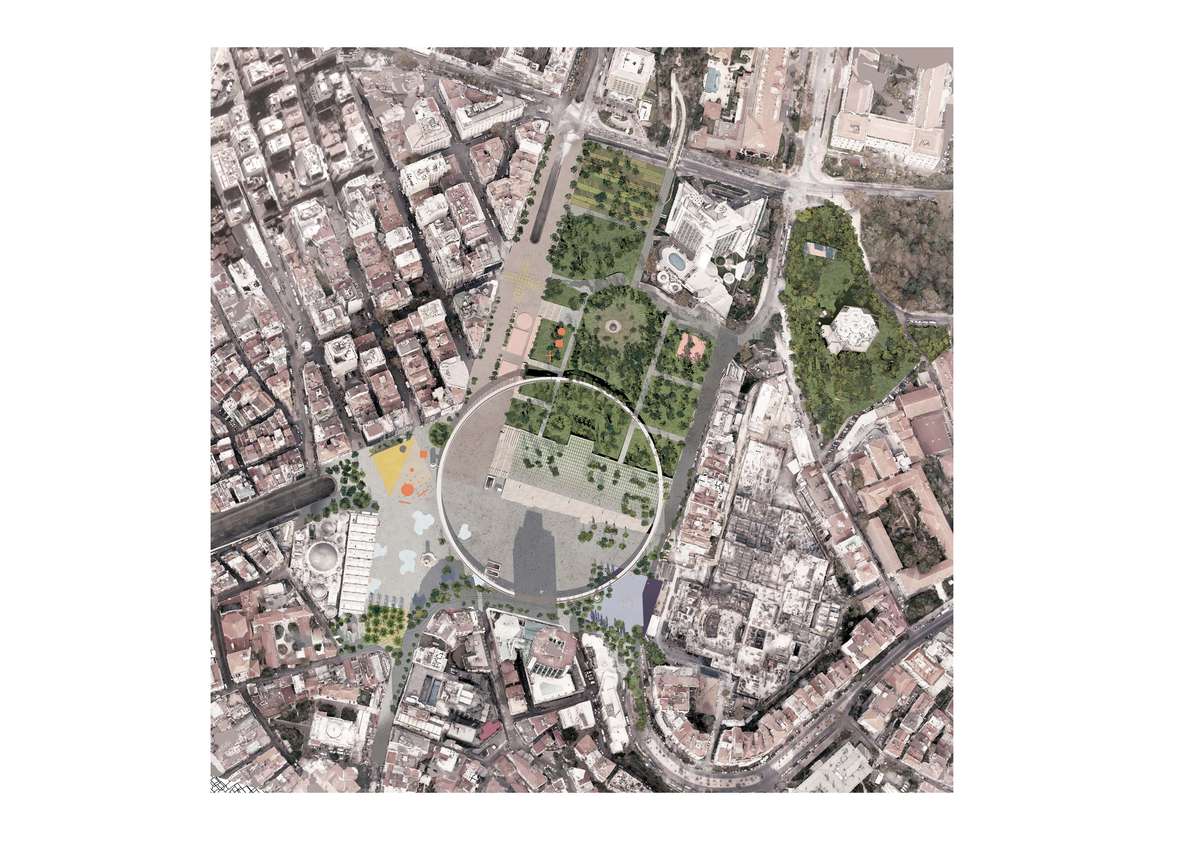
A set of architectural forms and structures as explicitly "artificial" (thus cultural) tools are defined to support that collective effort. Instead of the hopeless and superficial project of imposing some kind of preprocessed „identity” onto the Taksim-Gezi sequence, the project accentuates the already existing potentials and refines the realtionships between the constituent parts and urban elements of the void.
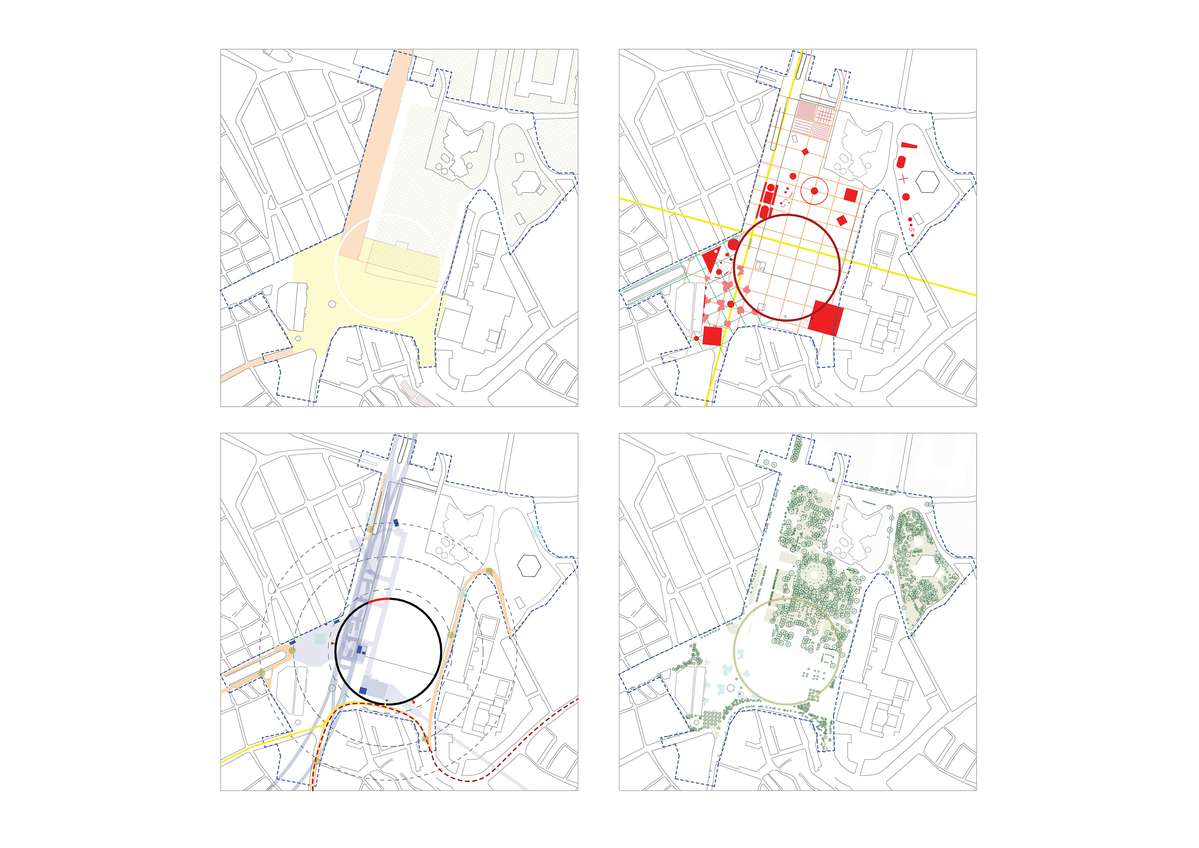
Islands are concentrated spots of buit or green matter, which serve as small centralities and frames of orientation, activities, and different atmospheres within the void. They are distinct elements, clear-cut architectural episodes that can be used and connected in multiple ways without referring back to a unified and homogenised design-narrative. Their insular form would provide the community with the possibility of transforming the area in a considered, incremental fashion, extended in time.
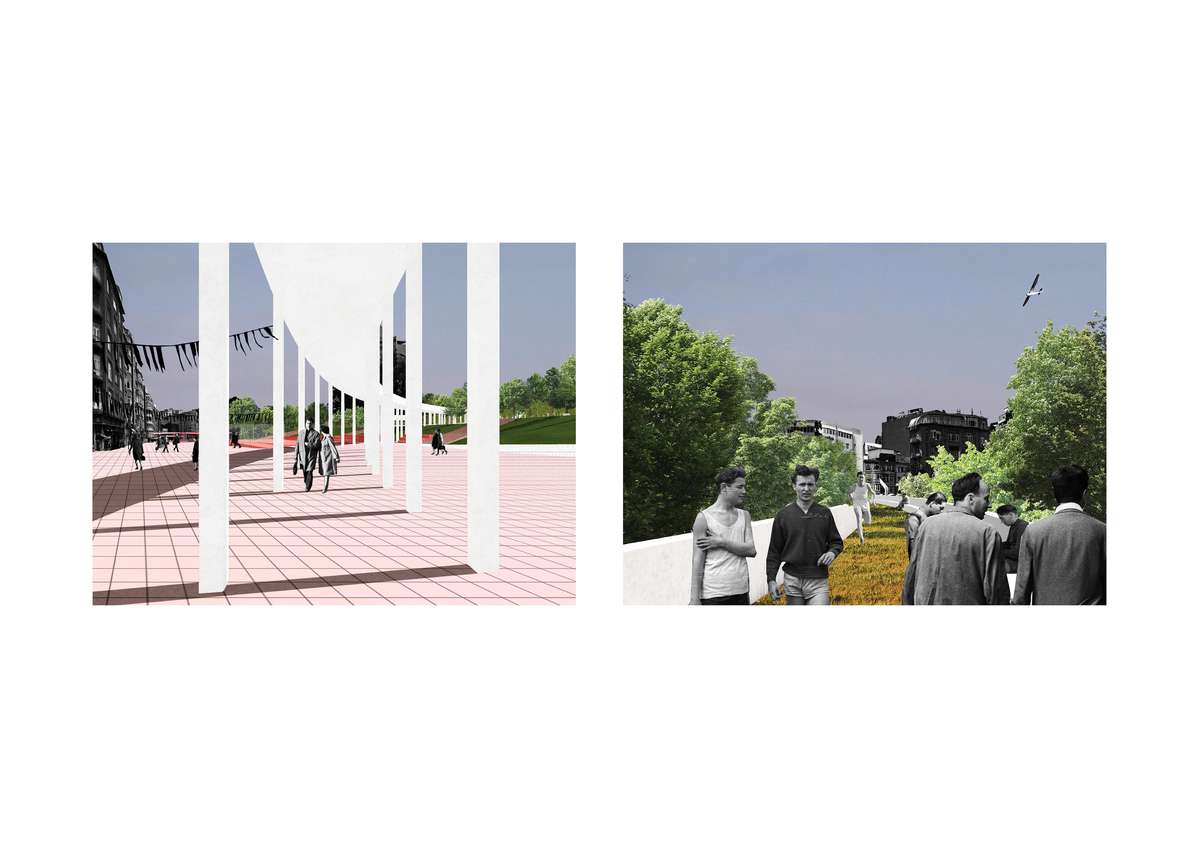
Such an open ended project would still need a large, initial gesture of foundation, an act that immediately communicates the ambition of the city to reinvent its public spaces, and transforms the spatial experience of Taksim square and Gezi Park into a coherent and easily identifiable new unity. This act would be the construction of a large circular form, a colonnade supporting an elevated walkway hovering above Taksim square and cutting into the green matter of Gezi Park.
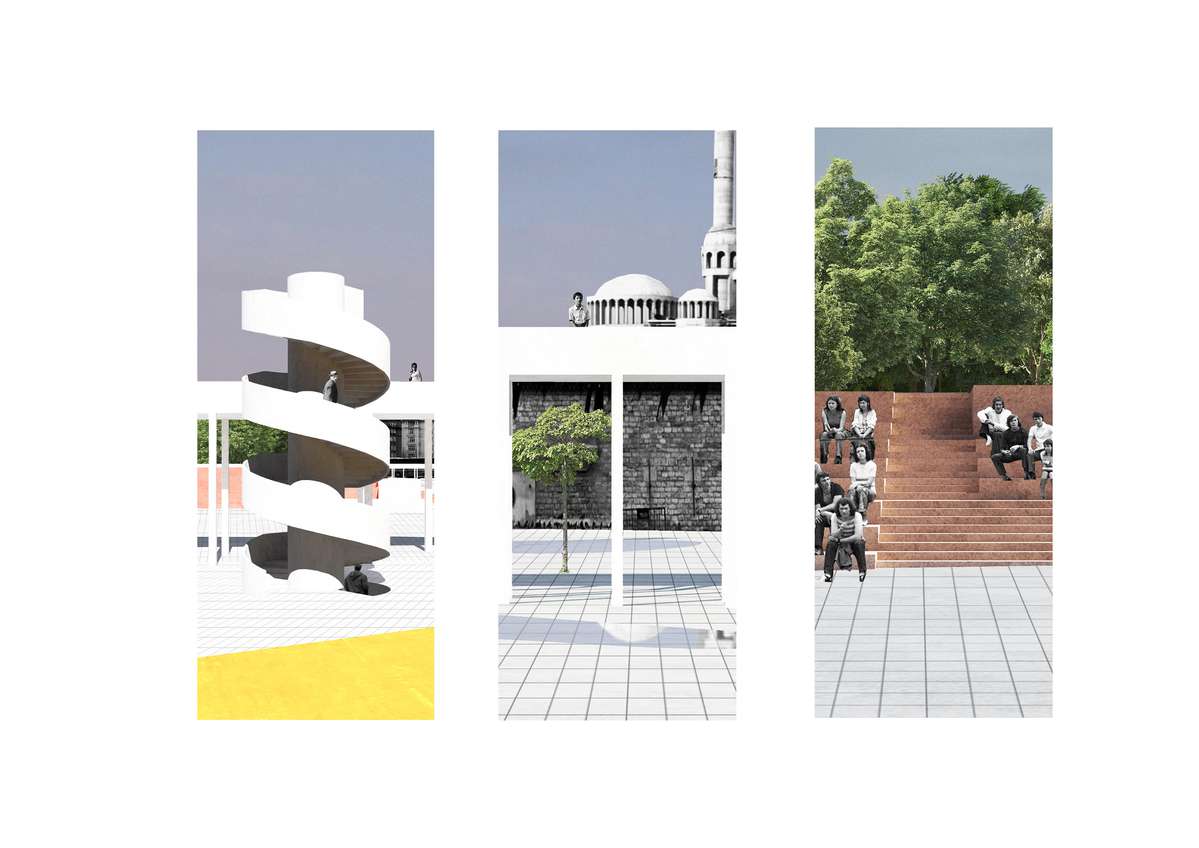
This large form makes space without phisically enclosing or blocking it; the circle defines both the central portion of Taksim square and the terrace in Gezi overlooking it as a large surface freed from any pre-defined program. These two parts are connected by a substantial extension and slight replacement of the existing marble staircase, turning the slope into a theatrical landscape of steps and platforms.
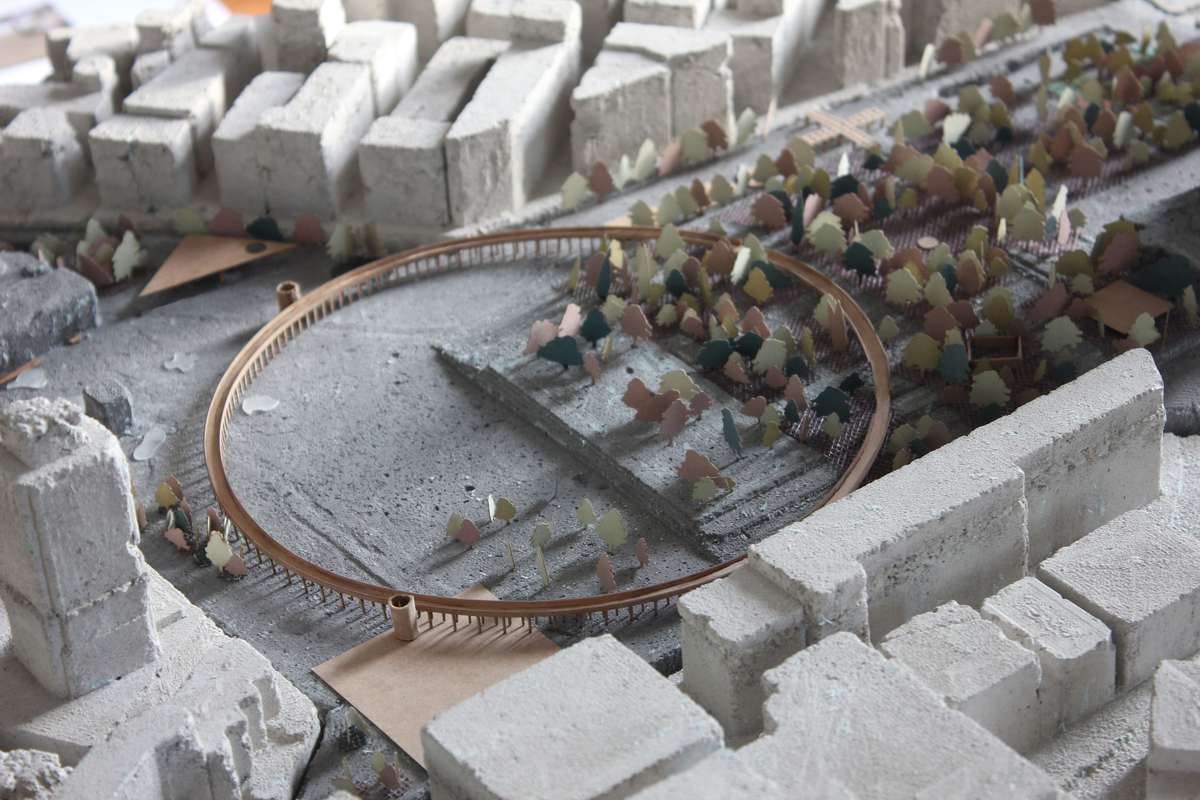
The circle as the central figure gives visual and organisational clarity and as a large ruler, a sense of scale and measure to the void. Its form seems arbitrary, but precisely that artificial and highly formal quality should mark in time and space the act of refoundation for the Taksim area, and also the transhistorical project of society to mark and transform places expressing the desires of the collective.
Islands of Espacement
Islands of Espacement

- Site-specific cases
Our method is not about an authorial „design” of new, ideal forms of (public) space, rather the selection of a wide range of abstract figures based on the historically accumulated "general intellect" of architecture.
Taksim is a great urban void in search of a form. It has the size and the perfect location to be a „place for everything and everyone”. Public life could unfold as a theatrical proccess performed by the gigantic multitude of Istanbul, yet it now dissolves into the functional flows of urbanization. The real problem is that of form and interface: the difficult whole of figure and ground, limits and frames, scale and legibility.
We propse a gradual process of transformation for this multifaceted void into a trajectory of distinct spaces and places.
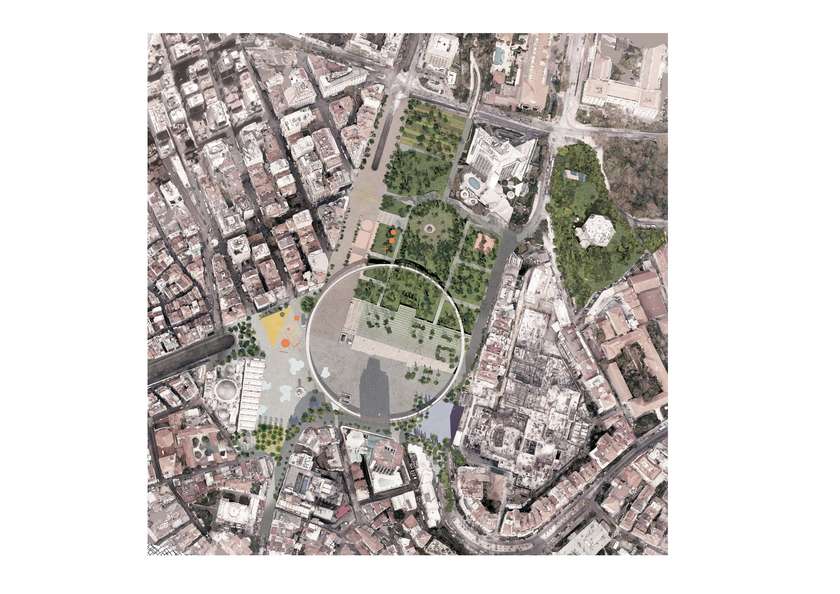
A set of architectural forms and structures as explicitly "artificial" (thus cultural) tools are defined to support that collective effort. Instead of the hopeless and superficial project of imposing some kind of preprocessed „identity” onto the Taksim-Gezi sequence, the project accentuates the already existing potentials and refines the realtionships between the constituent parts and urban elements of the void.
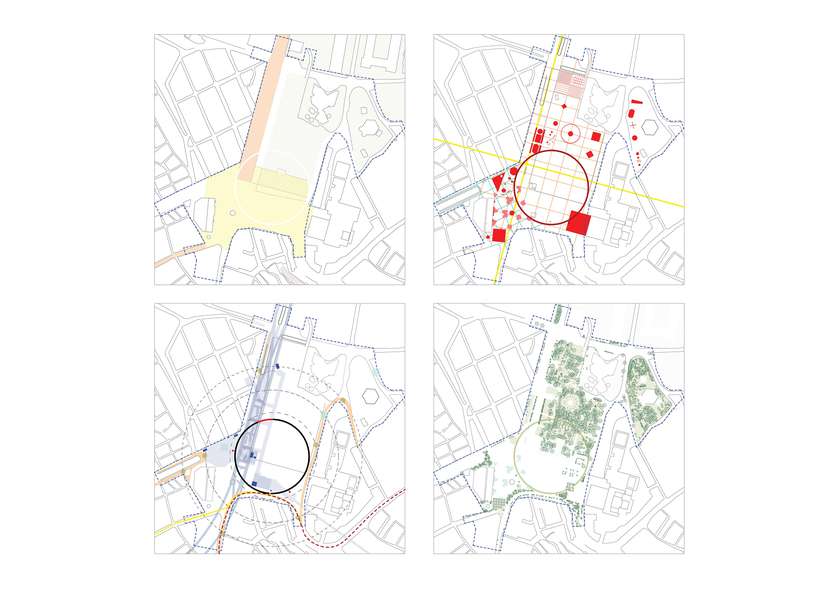
Islands are concentrated spots of buit or green matter, which serve as small centralities and frames of orientation, activities, and different atmospheres within the void. They are distinct elements, clear-cut architectural episodes that can be used and connected in multiple ways without referring back to a unified and homogenised design-narrative. Their insular form would provide the community with the possibility of transforming the area in a considered, incremental fashion, extended in time.
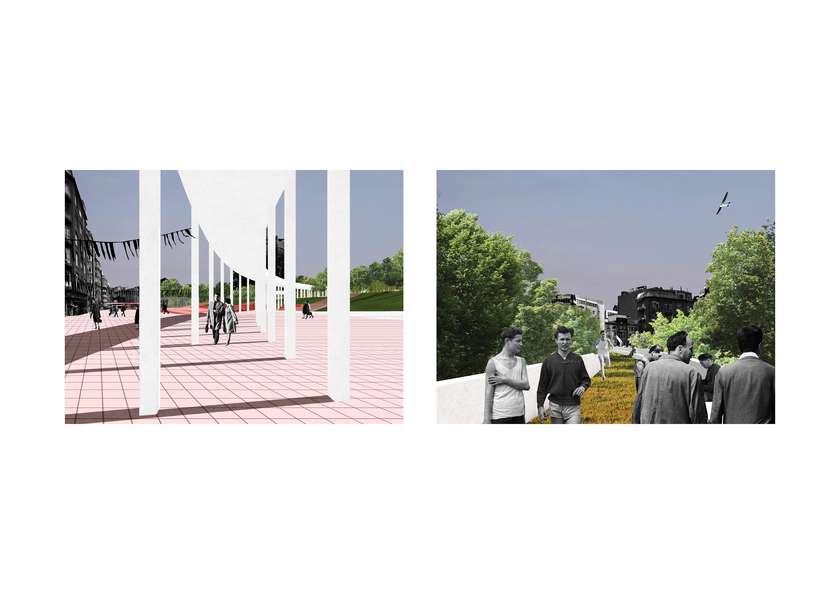
Such an open ended project would still need a large, initial gesture of foundation, an act that immediately communicates the ambition of the city to reinvent its public spaces, and transforms the spatial experience of Taksim square and Gezi Park into a coherent and easily identifiable new unity. This act would be the construction of a large circular form, a colonnade supporting an elevated walkway hovering above Taksim square and cutting into the green matter of Gezi Park.
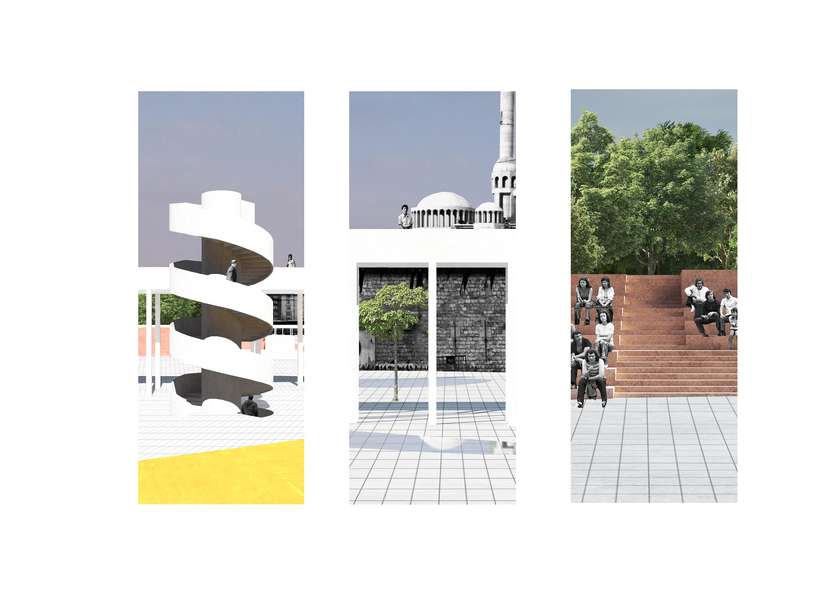
This large form makes space without phisically enclosing or blocking it; the circle defines both the central portion of Taksim square and the terrace in Gezi overlooking it as a large surface freed from any pre-defined program. These two parts are connected by a substantial extension and slight replacement of the existing marble staircase, turning the slope into a theatrical landscape of steps and platforms.
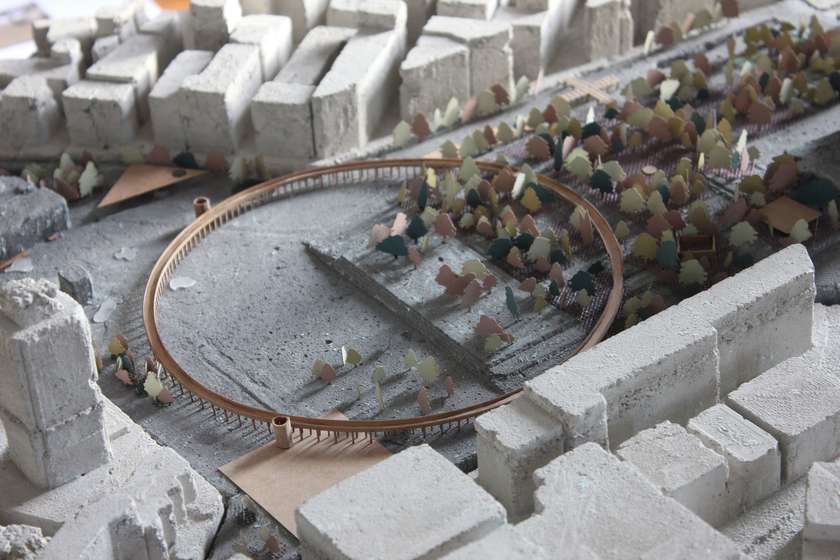
The circle as the central figure gives visual and organisational clarity and as a large ruler, a sense of scale and measure to the void. Its form seems arbitrary, but precisely that artificial and highly formal quality should mark in time and space the act of refoundation for the Taksim area, and also the transhistorical project of society to mark and transform places expressing the desires of the collective.